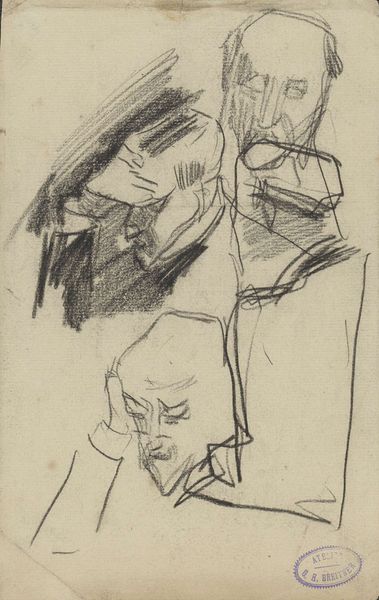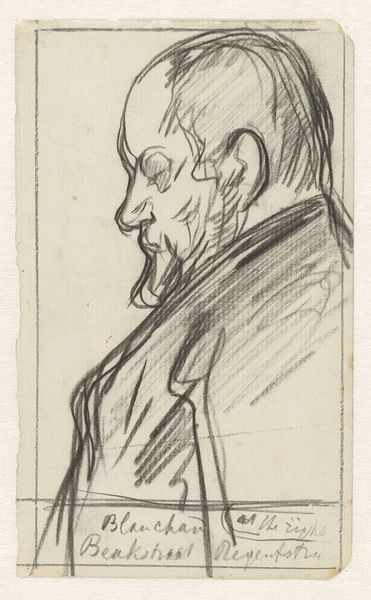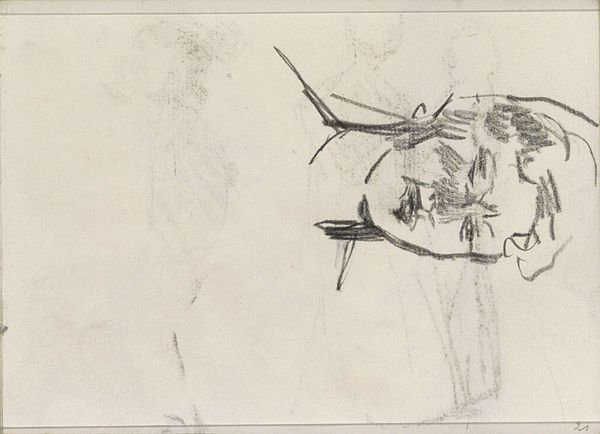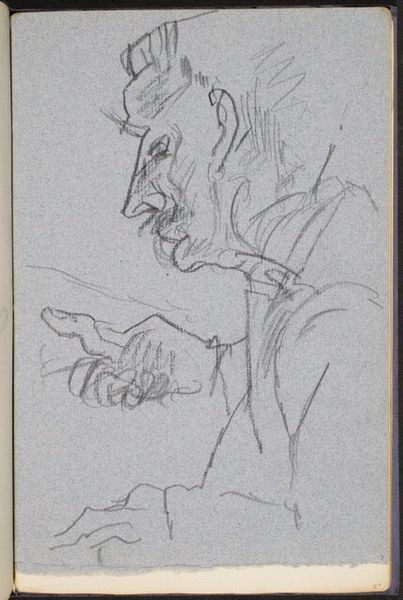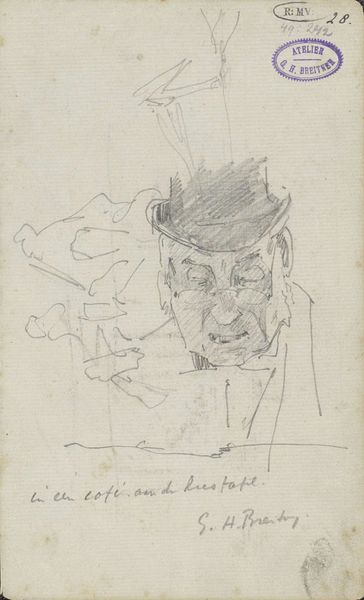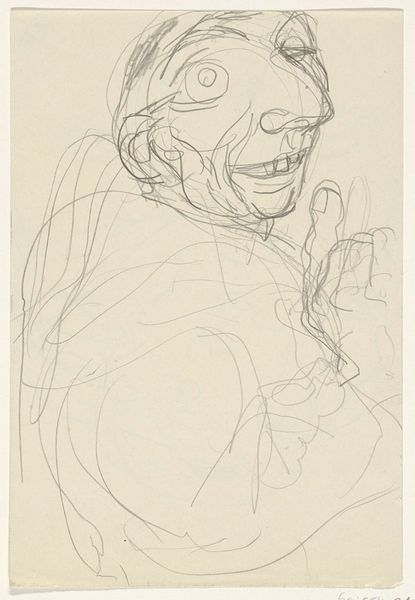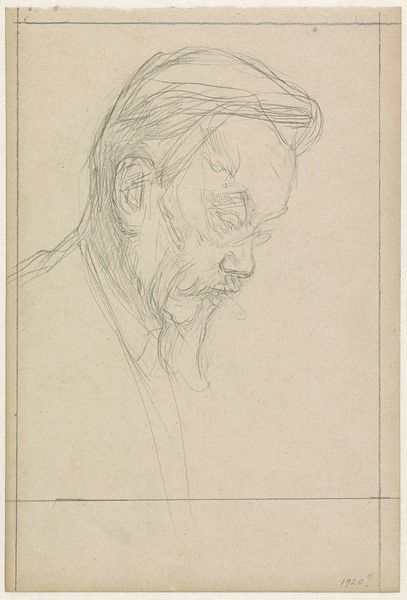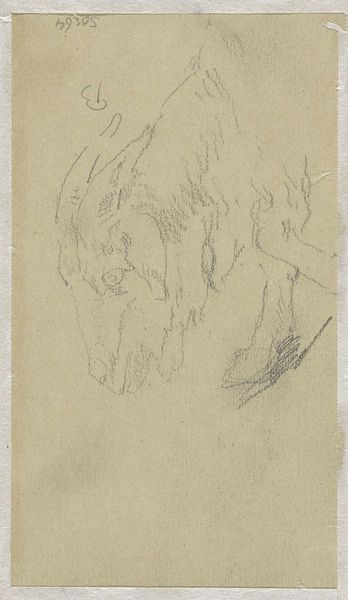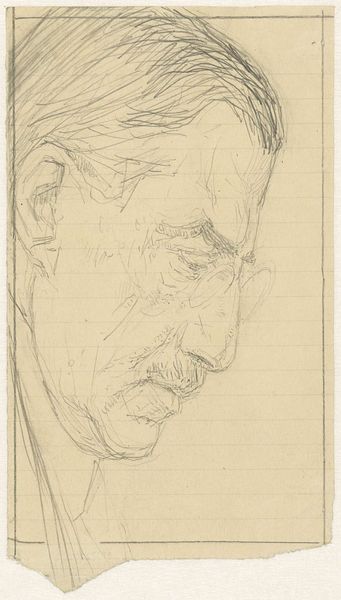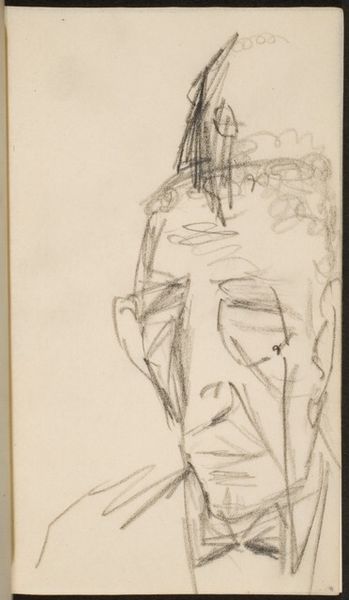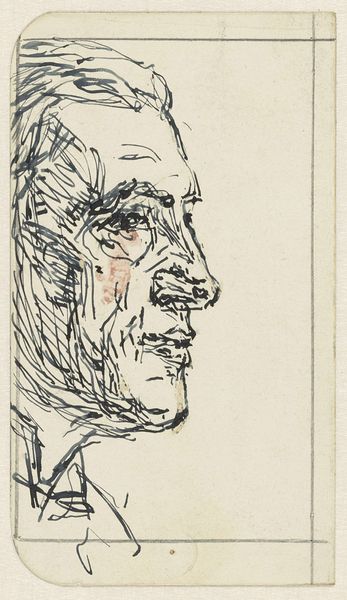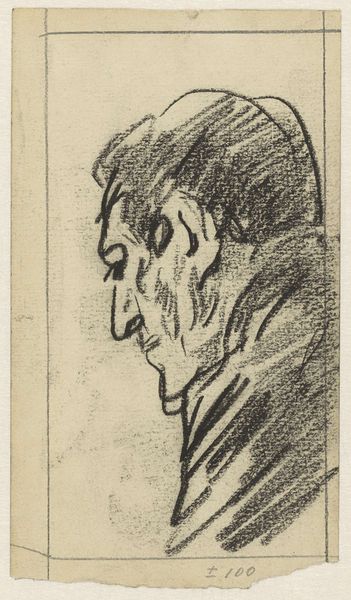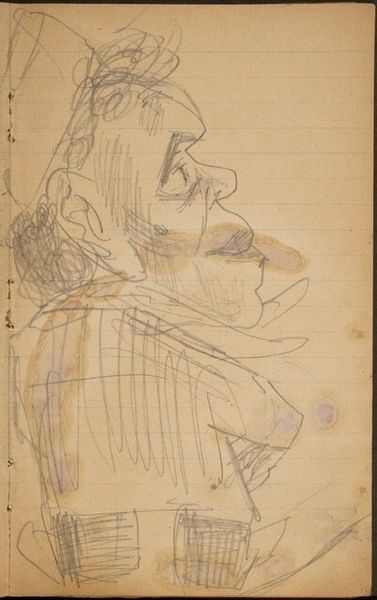
drawing, pencil, graphite
#
portrait
#
drawing
#
pencil
#
graphite
#
realism
Dimensions: height 155 mm, width 115 mm
Copyright: Rijks Museum: Open Domain
Curator: I'm immediately drawn to the ephemeral quality of this work. It’s a pencil and graphite drawing, "Portret van de schilder Jan Toorop," dating from 1874 to 1925, housed here at the Rijksmuseum. Editor: There’s a haunting unfinished quality, wouldn't you agree? A sense of transience evoked through the light touches of graphite and the exposed paper beneath. What can we say about the circumstances around its production? Curator: Well, the portrait is by Jan Veth, known for his literary work and critical voice, especially regarding social engagement in art. This rendering of Toorop offers insight into the cultural milieu of Dutch artists during this period. Consider how societal shifts might've influenced artistic expressions and interpersonal connections. Editor: The way Veth uses line, especially, is striking. Observe how some are boldly reinforced while others disappear almost into the ground. It reminds us that this is very much about representation and interpretation, as well as a personal style that’s visible in both contour and shadow. Curator: Indeed. Toorop himself was a pivotal figure in the Dutch art scene, blending Symbolism and Javanese influences, and engaging with politically charged themes within colonized territories. His life's narrative inevitably plays into how we read this particular portrait by Veth. Do you think this has to be a symbolic statement on Toorop himself? Or Veth's views? Editor: The contrast is essential here; in the formal treatment of planes that recede and assert themselves. Consider how that balance adds nuance to the figure of Toorop—revealing a certain... perhaps a thoughtful nature? An inquisitive gaze, rendered on the aged paper that might have stories of its own to tell. The interplay almost acts like visual counterpoint, don't you think? Curator: The image, especially when placed next to Toorop's historical artistic work and output, and the greater context of his views, allows us to consider relationships among artists of this period, the representation of cultural identity, and the subtle influences within artistic circles that informed each other. It's also such a quiet study in person. Editor: Agreed. It prompts deeper musings that go beyond aesthetics into considering broader philosophical underpinnings on representation and perception itself.
Comments
No comments
Be the first to comment and join the conversation on the ultimate creative platform.

